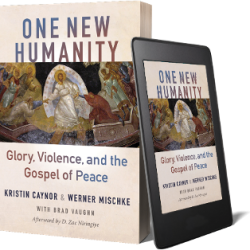Today’s post comes from guest blogger Christine Dillon, a church planter in Taiwan with OMF International. Christine has written Telling the Gospel through Story: Evangelism that Keeps People Wanting More as well as 1-2-1 Discipleship. She has an excellent blog, which has been translated into other languages including Mandarin.
J
At the same time, we often miss other themes. You could say that we tend to share on one “channel.” It is only as others are on the same wavelength that they can hear and understand the message we try to communicate.
The problem is, of course, that most of the world isn’t on our wavelength. Honour and shame are themes that many people (especially Westerners and those they’ve influenced) fail to see at all. Yet, it is everywhere in Scripture.
After each session from Jackson, various colleagues would come up to me and say, “Did you notice, Bible storytelling gives us the advantages in communication and avoids many pitfalls?” Yes, I had noticed and had been rejoicing in another strength of storytelling.
In this post, I want to share a few of these advantages.
What is Bible storying?
First of all, what do I mean by Bible storytelling?
There are a wide range of styles and discussion methods around. After a decade of experimentation, the form of storytelling that we’ve come to use keeps as close to the text as possible while allowing colloquial vocabulary to suit the listener. The stories we tell are under 20 verses long and usually have an introduction where specialized vocabulary or concepts are explained. As we mostly tell sets of stories, there will also be a section linking back to the previous story.
We differentiate between the introduction and the story by using a tactic like opening/closing our Bible at the beginning and end of the story. Or, we could just say, “Today’s story starts here …” Most times, we will share the story three times before beginning discussion as that allows the actual story to sink into people’s hearts.
How do we do it?
We use six questions, which are deliberately left fairly general.
. 1) What do you like about this story? Why?
. 2) What questions might someone have about this story?
. 3) What can we learn about people from the characters in this story?
. 4) What can we learn about God? (or Jesus, if he is in the story)
. 5) What will you do as a result of hearing this story?
. 6) Who do you want to share this story with?
These general questions have various advantages.
What’s important to them?
First, if we pay attention, we should start noticing the themes that the listeners notice.

If they start noticing many honour/shame kind of themes, it suggests that these are important for our people group. If the themes that keep surfacing puzzle us, it alerts us to dig deeper, trying to understand why these issues seem so important.
Having discussions in groups with a wide range of people is helpful too. Different themes will surface fairly naturally.
Our local believers almost never notice themes concerning the glory of God (His honour) and how He protects that glory. The believers here are not alone in missing this theme since humans are so self-centred. We tend to only see things that relate to us personally. If I’m in a group, I wait until the last to answer. Then I try to share something that opens their eyes to a theme they seem to be missing.
More ways to tell the Story
One of the side effects of regularly using storytelling is that people begin to learn to explain the good news in many ways rather than just using “one channel.”
For example, “salvation” in Noah’s day came through believing what God said about judgment and to get on the boat! In Abraham’s day, he had to follow the God who had promised to bless him, even when he didn’t know where he was going.
The more stories people learn, the more they grow spiritually themselves and the more they see different perspectives. By using stories, we can communicate on many channels at once. This enables us to communicate with more kinds of people, not just those “like us.”
So, how does storying help us to contextualize in an honor-shame context?
1. Stories provide natural opportunities to identify key themes that connect with the hearts and minds of our local listeners.
2. We can use stories to diversify the way we share the gospel. Stories pack together various themes that reach people who are different than us.
For much more information about Bible storytelling, check out www.storyingthescriptures.com.













